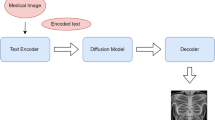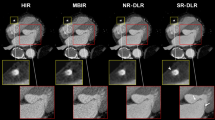Abstract
Previous studies have shown that Joint Photographic Experts Group (JPEG) 2000 compression is better than JPEG at higher compression ratio levels. However, some findings revealed that this is not valid at lower levels. In this study, the qualities of compressed medical images in these ratio areas (∼20), including computed radiography, computed tomography head and body, mammographic, and magnetic resonance T1 and T2 images, were estimated using both a pixel-based (peak signal to noise ratio) and two 8 × 8 window-based [Q index and Moran peak ratio (MPR)] metrics. To diminish the effects of blocking artifacts from JPEG, jump windows were used in both window-based metrics. Comparing the image quality indices between jump and sliding windows, the results showed that blocking artifacts were produced from JPEG compression, even at low compression ratios. However, even after the blocking artifacts were omitted in JPEG compressed images, JPEG2000 outperformed JPEG at low compression levels. We found in this study that the image contrast and the average gray level play important roles in image compression and quality evaluation. There were drawbacks in all metrics that we used. In the future, the image gray level and contrast effect should be considered in developing new objective metrics.










Similar content being viewed by others
References
Huang HK: PACS—Picture Archiving and Communication Systems in Biomedical Imaging. New York: VCH Publishers, 1996
Przelaskowski A: Vector quality measure of lossy compressed medical images. Comput Biol Med 34:193–207, 2004
Wong S, Zaremba L, Gooden D, Huang HK: Radiologic image compression—a review. Proc IEEE 83:194–219, 1995
Chen ZD, Chang RF, Kuo WJ: Adaptive predictive multiplicative autoregressive model for medical image compression. IEEE Trans Med Imaging 18:181–184, 1999
Chen TJ, Chuang KS, Wu J, Chen SC, Hwang IM, Jan ML: Quality degradation in lossy wavelet image compression. J Digit Imaging 16:210–215, 2003
Erickson BJ: Irreversible compression of medical images. J Digit Imaging 15:5–14, 2002
Seeram E: Irreversible compression in digital radiology. A literature review. Radiography 12:45–59, 2006
Siddiqui KM, Johnson JP, Reiner BI, Siegel EL: Discrete cosine transform JPEG compression vs. 2D JPEG2000 compression: JNDmetrix visual discrimination model image quality analysis, Proceedings of SPIE, vol. 5748, Medical Imaging: PACS and Imaging Informatics, 2005, pp 202–207
Eikelboom RH, Yogesan K, Barry CJ, Constable IJ, Tay-Kearney ML, Jitskaia L, House PH: Methods and limits of digital image compression of retinal images for telemedicine. Invest Ophthalmol Vis Sci 41:1916–1924, 2000
Brennecke R, Burgel U, Rippin G, Post F, Rupprecht HJ, Meyer J: Comparison of image compression viability for lossy and lossless JPEG and Wavelet data reduction in coronary angiography. Int J Card Imaging 17:1–12, 2001
Iyriboz TA, Zukoski MJ, Hopper KD, Stagg PL: A comparison of wavelet and Joint Photographic Experts Group lossy compression methods applied to medical images. J Digit Imaging 12(2 Suppl 1):14–17, 1999
Ricke J, Maass P, Lopez Hanninen E, Liebig T, Amthauer H, Stroszczynski C, Schauer W, Boskamp T, Wolf M: Wavelet versus JPEG (Joint Photographic Expert Group) and fractal compression. Impact on the detection of low-contrast details in computed radiographs. Invest Radiol 33:456–463, 1998
Hui OT, Besar R: Medical image compression using JPEG2000 and JPEG: a comparison study. J Mech Med Biol 2:313–328, 2002
Janhom A, van der Stelt PF, Sanderink GCH: A comparison of two compression algorithms and the detection of caries. Dentomaxillofacial Radiol 31:257–263, 2000
Slone RM, Foos DH, Whiting BR, Muka E, Rubin DA, Pilgram TK, Kohm KS, Young SS, Ho P, Hendrickson DD: Assessment of visually lossless irreversible image compression: comparison of three methods by using an image-comparison workstation. Radiology 215:543–553, 2000
Li F, Sone S, Takashima S, Kiyono K, Yang ZG, Hasegawa M, Kawakami S, Saito A, Hanamura K, Asakura K: Effects of JPEG and wavelet compression of spiral low-dose CT images on detection of small lung cancers. Acta Radiol 42:156–160, 2001
Przelaskowski A: Hybrid vector measures of compressed medical images, SPIE Symposium Medical Imaging: Image perception and performance, http://www.ire.pw.edu.pl/~arturp/Publikacje/ap_HVM.pdf, 2000
Kalyanpur A, Neklesa VP, Taylor CR, Daftary AR, Brink AR: Evaluation of JPEG and wavelet compression of body CT images for direct digital teleradiologic transmission. Radiology 217:772–779, 2000
Ebrahimi F, Chamik M, Winkler S: JPEG vs. JPEG2000: an objective comparison of image encoding quality. Proc SPIE Appl Digit Image Proc 5558:300–308, 2004
Wang Z, Bovic AC: A universal image quality index. IEEE Signal Process Lett 3:81–84, 2002
Chen TJ, Chuang KS, Wu J, Chen SC, Hwang IM, Jan ML: A novel image quality index using Moran I statistics. Phys Med Biol 48:N131–N137, 2003
Wang Z, Bovik AC, Evans BL: Blind measurement of blocking artifacts in images. IEEE Int Conf Image Proc 3:981–984, 2000
Chen TJ, Chuang KS, Chiang YC, Chang JH, Liu RS: A statistical method for evaluation quality of medical images: case study in bit discarding and image compression. Comput Med Imaging Graph 28:167–175, 2004
Chen TJ, Chuang KS, Chang JH, Shiao YH, Chuang CC: A blurring index for medical images. J Digit Imaging 19:118–125, 2006 DOI: http://dx.doi.org/10.1007/s10278-005-8736-y, 2005
Chuang KS, Huang HK: Assessment of noise in a digital image using the join-count statistic and Moran test. Phys Med Biol 37:357–369, 1992
Cliff AD, Ord JK: Spatial process: models and applications. London: Pion, 1981
Acknowledgements
The authors would like to thank Mr. Josiah Yoder of Purdue University, Mr. Thomas Leonard of Hillsdale College, and Dr. Maria N. Cusipag of Shu-Zen College of Medicine and Management for their help in editing this paper. This work has been supported by two research grants in Taiwan: NSC 95-2314-B-471-001 from the National Science Council and SZM095301038 from Shu-Zen College of Medicine and Management.
Author information
Authors and Affiliations
Corresponding author
Rights and permissions
About this article
Cite this article
Shiao, YH., Chen, TJ., Chuang, KS. et al. Quality of Compressed Medical Images. J Digit Imaging 20, 149–159 (2007). https://doi.org/10.1007/s10278-007-9013-z
Received:
Revised:
Accepted:
Published:
Issue Date:
DOI: https://doi.org/10.1007/s10278-007-9013-z




